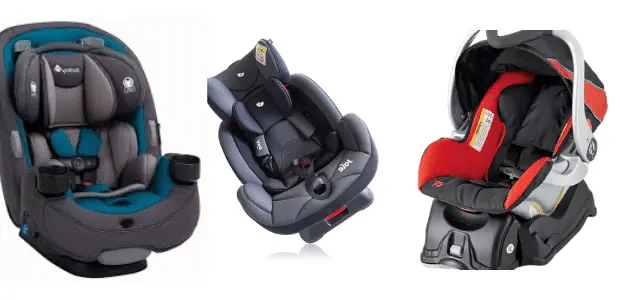
Baby Car Seats Guide: Best Car Seats in Cheap Price
Posted on |
Whether you are a parent of new born baby, 9 months old baby, or two year old, this age-by-age guide explains your baby’s car seat requirements. A car seat is one of the most significant gears that every parent wishes to buy for their baby’s new parent. It is one of the main items you will purchase for your baby that can possibly save their life. Not only that, you can’t bring a child home from the clinic without a car seat.
Wondering where to begin?
There are three essential kinds of car seats for newborn children and babies: Rear-facing, Forward-facing, and Convertible car seats, which convert from rear to Front-facing quite easily. As indicated by the American Academy of Pediatrics (AAP), kids have to to stay in a Rear-facing car seat for as long as possible, until they achieve the maximum height or weight allowed by their seat.
As your baby eventually grows, you’ll have to alter the direction that his car seat faces and how he sits in it and you may need to purchase another seat if possible. Look at this age-by-age guide for keeping the car traveling safe for your little one.
1) Car Seats for Infants

There are two sorts of car seats for newborn children, and these seats are equally safe and self-protected, so the one you pick relies upon personal preference. These are your alternatives when purchasing a car seat for a newborn baby:
- Infant-Only Car Seat
An infant car seat can be utilized until the infant weighs 20 to 22 pounds or his head is within 1 or 1.5 inches of the top of the seat. They are commonly lighter in weight and intended to be portable. Many parents favor the convenience of an infant carrier due to the fact that the seat can be removed from the car without unstrapping and possibly waking a sleeping infant. The car seat base remains tied into the vehicle with the carrier essentially snaps in and out the base. Infant-only car seats are additionally helpful due to the fact that they can click onto a stroller base. So when looking for an infant carrier, try to search for one that is additionally compatible with your stroller.
- Convertible car seat
A convertible car seat can be utilized from birth, yet infant-only car seats fit little children better. Pick one that is certified to face rear until the child weighs in around 30 pounds. Convertible seats are an extraordinary alternative if you need an item that will be long since they can be introduced as either rear or forward-facing seats. In addition, most have limits that will enable kids to ride rear-facing for 2 years or more. Convertible seats are not intended to be portable; rather they stay fixed in the car quite easily.
2) Car Seats for Toddlers

When your kid exceeds the requirements of a rear-facing car seat, he needs to use a forward-facing car seat with a hitch for as long as possible, until he reaches the weight and height limit. These are your alternatives when purchasing a car seat for a little child who has exceeded the requirements a rear-facing seat:
- Forward-facing only car seat
Numerous forward-facing only car seat can hold kids as much as 65 pounds or more. Make sure to refer to your genuine car seat manual for maximum height and weight particulars!
- Combination car seat
This functions with a harness until the little one achieves 40-65 pounds. From that point onward, you can remove the harness and the car seat changes over to a belt-positioning booster, which can be utilized for children as much as 80-100 pounds with your vehicle’s lap/shoulder belt.
3) Car Seats for Preschoolers

When your little one has exceeded the requirement for an onward-facing car seat with a harness, he should change to a belt-positioning booster with lap/shoulder belt in the vehicle. This kind of vehicle seat fits children as much as 80-100 pounds, most children need boosters from about age 3 or 4 to around age 8. Remember that children need head support: Use a high-back booster if the vehicle has a low backseat arrangement. A backless booster can be utilized if the vehicle’s seat has a headrest.
In a Nutshell
Work on buckling the seat into your vehicle before your child’s first ride. Ensure the harness straps fit cozily on your child’s body. Try to use the most minimal harness slots for a newborn baby. Keep the straps in the slots at or beneath your infant’s shoulders for the rear-facing position. Ensure the harness straps fit appropriately over the shoulders and between the legs. Dress your baby in garments that keep their legs free. To fill void spaces and give support, roll up two or three little blankets and fold them between your baby’s shoulders and head, on both his/her sides right and left. Despite everything, put a rolled diaper between his/her legs behind the crotch strap. Try not to put thick padding underneath or behind the baby. I hope this will help a lot.
